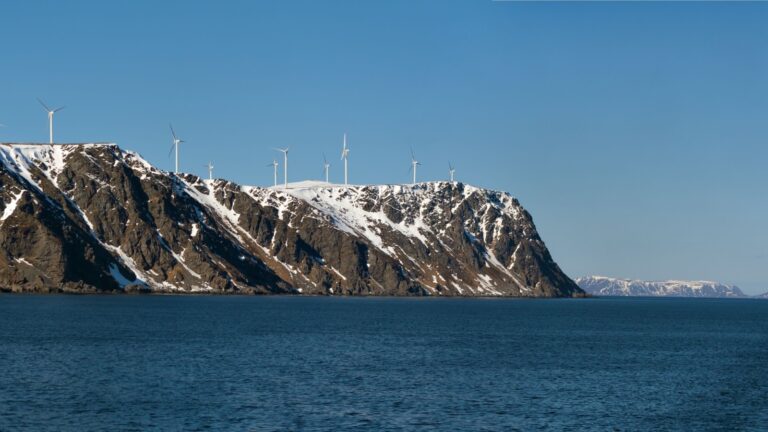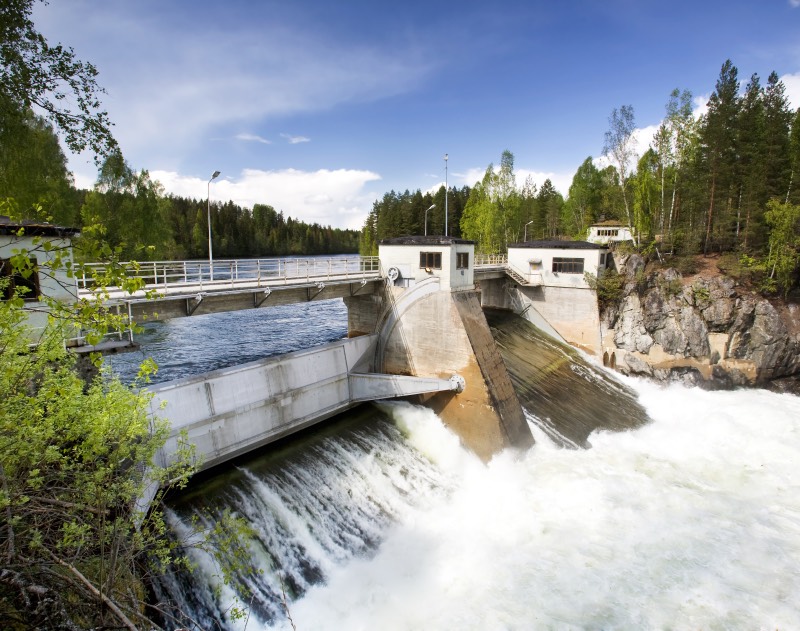A leader in green energy technologies, or a hypocritical nation that still makes its money from oil and gas? Norway says it is in an “energy transition”, but what does that really mean? Let's dive in to the details and take a look.
Norway is often praised for its green policies and commitment to renewable energy, but the country finds itself at the centre of a global debate over the balance between economic sustainability and environmental responsibility.

As one of the world’s largest exporters of oil and gas, Norway has faced criticism for its continued extraction of fossil fuels, even as it promotes itself as a leader in renewable energy.
This paradox has left many questioning whether the nation is truly committed to the global effort to combat climate change or if its green credentials and the so-called “energy transition” are simply ways to gloss over its oil dependency.
Recently, Jonas Gahr Støre, the Prime Minister of Norway, gave a speech to the World Leaders Forum at Columbia University, titled ‘Norway and the Age of Energy'.
The speech, which inspired me to write this article, touched on several key themes: the energy transition, Norway’s historical and current role in the global energy market, and the importance of renewable energy.
The energy transition is a term often used by politicians and business leaders, but is it simply a way of postponing meaningful action? Let's take a look at Norway's energy story–past, present, and future–to understand what it means.
Norway’s Oil and Gas Legacy
The discovery of oil in the Norwegian continental shelf in 1969 marked the beginning of a new era for Norway’s economy.
Before this, Norway was a relatively modest economy with a population reliant on traditional industries like fishing and agriculture. However, the discovery of the Ekofisk oil field in the North Sea changed everything.
Norwegian authorities initially had little faith in the country’s hydrocarbon potential. As recently as 1958, leading experts said there were no hydrocarbons on the Norwegian continental shelf. Yet, just over a decade later, Norway found itself sitting atop vast oil reserves.
Norway quickly established itself as a global player in oil production, with the government maintaining strict control over its energy resources.
Wise Investment
In 1990, the government created the Norwegian Government Pension Fund Global, known informally as the Oil Fund, to manage the revenues from oil and gas production.
Today, this fund is one of the largest sovereign wealth funds in the world, valued at over $1.7 trillion at the time of writing. The fund helps ensure that Norway’s oil wealth is preserved for future generations while insulating the economy from the volatility of oil prices.
At the height of its oil production in the early 2000s, Norway was producing close to 3.4 million barrels of oil equivalent per day. While production has declined since then, the country remains the third-largest exporter of natural gas in the world, supplying around one-third of Europe’s gas needs.
The Push for Green Energy
Despite its role as an oil and gas giant, Norway has long been at the forefront of renewable energy development.
Hydropower has been a key feature of Norway’s energy landscape for more than a century, with over 95% of the country’s domestic electricity needs generated from hydroelectric plants.

This reliance on clean, renewable energy for domestic use has allowed Norway to minimise its own carbon footprint, even as it exports fossil fuels to other countries.
However, the global energy transition has placed increasing pressure on Norway to reduce its oil and gas production.
Environmental activists and climate scientists argue that continuing to extract fossil fuels is incompatible with the goals of the Paris Agreement, which aims to limit global warming to 1.5°C above pre-industrial levels.
In response, Norway has committed to reducing its emissions and investing heavily in renewable energy technologies. Støre emphasised that Norway is not in the “oil age” but in the “energy age”, signalling the country’s determination to shift away from fossil fuels.
“We are transitioning out of oil, out of gas, out of fossil, and now into a new chapter”, he said in his recent speech. Støre acknowledged that this is a complex process, as Norway must balance its economic reliance on fossil fuel exports with its climate commitments.
The Role of Natural Gas in the Energy Transition
Critics of Norway’s continued fossil fuel extraction argue that the country should immediately halt all oil and gas production.
However, Støre and other Norwegian officials have defended the gradual approach, stressing that an abrupt shift away from fossil fuels could destabilise the global energy market and harm economies that are heavily dependent on oil and gas imports.
Natural gas, in particular, plays a crucial role in Europe’s energy security, especially in light of the ongoing war in Ukraine. With Russian gas supplies cut off, European countries have turned to Norway to help fill the gap.
In 2023, Norway increased its gas exports by around 10% to meet the urgent needs of countries like Germany, which were at risk of severe energy shortages.
Støre has highlighted the importance of managing this transition carefully, explaining that while Norway is working to meet its climate targets, it must also ensure a stable supply of energy to its European partners.
“At that moment, my government was able to tell the companies: Put everything aside and see what you can do to increase your gas exports right now. And for that reason, Germany was able to fill its storage and keep continuity and be able to get through that crisis”, he explained.
Carbon Capture and Storage
One of the cornerstones of Norway’s strategy to reduce emissions while continuing to extract oil and gas is the development of carbon capture and storage (CCS) technology.
Norway has been a global leader in CCS, with over 30 years of experience in capturing carbon dioxide from industrial processes and storing it safely beneath the seabed.
Norway’s continental shelf is seen as one of the most promising locations for large-scale CCS, with enough capacity to store all of Europe’s CO2 emissions for decades.
According to Støre, “Norway has on its continental shelf probably enough space to store all of Europe's CO2 for many decades. We have created a complete value chain where we can take CO2 from waste plants, from gas, from hard-to-abate industries, such as cement.”
This technology, though still in its early stages globally, is seen as essential for achieving the world’s climate goals, particularly in sectors like heavy industry and natural gas production, where reducing emissions is more difficult.
The Future of Energy in Norway
As Norway moves into the next chapter of its energy history, renewable energy is becoming an increasingly important part of the landscape.
Offshore wind, hydrogen, and solar energy are key areas of growth for the country, with major investments being made to expand capacity and develop new technologies.
Norwegian companies are also playing a significant role in building offshore wind farms in the US and the UK, further cementing Norway’s position as a leader in the green energy transition.
By 2025, Norway plans to ban the sale of fossil fuel cars, a move that reflects the country’s commitment to reducing emissions in all sectors of the economy. In 2023, over 90% of new cars sold in Norway were electric, a sign that the country is well on its way to achieving its ambitious climate goals.
However, the path ahead is not without challenges. As the world continues to grapple with the consequences of climate change, Norway must navigate the difficult task of transitioning away from fossil fuels while maintaining its economic stability and ensuring a reliable energy supply for Europe.
In Støre’s words, “the challenge is that we will need to cut emissions while getting more energy. How do we square that circle?”
Norway’s answer lies in its deep expertise in both traditional and renewable energy, positioning the country to play a pivotal role in shaping the global energy future.


Not a big believer in CO2 being a poison. Without CO2 we have no trees, no food plants and no food.